
Lucrezia Borgia was an Italian noblewoman of the House of Borgia who was the illegitimate daughter of Pope Alexander VI and Vannozza dei Cattanei. She reigned as the governor of Spoleto, in her own right, a position usually held by Cardinals.

Girolamo Savonarola, OP or Jerome Savonarola was an ascetic Dominican friar from Ferrara and a preacher active in Renaissance Florence. He became known for his prophecies of civic glory, his advocacy of the destruction of secular art and culture, and his calls for Christian renewal. He denounced clerical corruption, despotic rule, and the exploitation of the poor.

Alessandro di Mariano di Vanni Filipepi, better known as Sandro Botticelli or simply Botticelli, was an Italian painter of the Early Renaissance. Botticelli's posthumous reputation suffered until the late 19th century, when he was rediscovered by the Pre-Raphaelites who stimulated a reappraisal of his work. Since then, his paintings have been seen to represent the linear grace of late Italian Gothic and some Early Renaissance painting, even though they date from the latter half of the Italian Renaissance period.
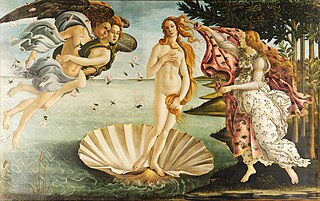
The Birth of Venus is a painting by the Italian artist Sandro Botticelli, probably executed in the mid 1480s. It depicts the goddess Venus arriving at the shore after her birth, when she had emerged from the sea fully-grown. The painting is in the Uffizi Gallery in Florence, Italy.
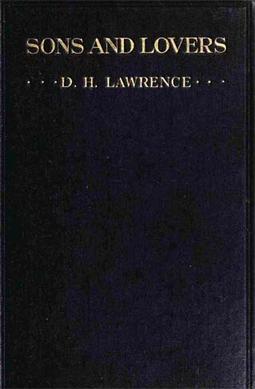
Sons and Lovers is a 1913 novel by the English writer D. H. Lawrence. It traces emotional conflicts through the protagonist, Paul Morel, and his suffocating relationships with a demanding mother and two very different lovers, which exert complex influences on the development of his manhood. The novel was originally published by Gerald Duckworth and Company Ltd., London, and Mitchell Kennerley Publishers, New York. While the novel initially received a lukewarm critical reception, along with allegations of obscenity, it is today regarded as a masterpiece by many critics and is often regarded as Lawrence's finest achievement. It tells us more about Lawrence's life and his phases, as his first was when he lost his mother in 1910 to whom he was particularly attached. And it was from then that he met Frieda Richthofen, and around this time that he began conceiving his two other great novels, The Rainbow and Women in Love, which had more sexual emphasis and maturity.
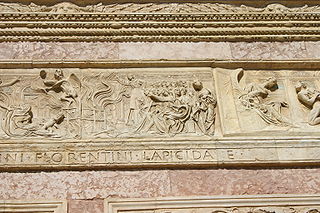
A bonfire of the vanities is a burning of objects condemned by religious authorities as occasions of sin. The phrase itself usually refers to the bonfire of 7 February 1497, when supporters of the Dominican friar Girolamo Savonarola collected and burned thousands of objects such as cosmetics, art, and books in the public square of Florence, Italy, on the occasion of Shrove Tuesday, martedí grasso.

The Good Soldier: A Tale of Passion is a 1915 novel by the British writer Ford Madox Ford. It is set just before World War I, and chronicles the tragedy of Edward Ashburnham and his seemingly perfect marriage, along with that of his two American friends. The novel is told using a series of flashbacks in non-chronological order, a literary technique that formed part of Ford's pioneering view of literary impressionism. Ford employs the device of the unreliable narrator to great effect, as the main character gradually reveals a version of events that is quite different from what the introduction leads the reader to believe. The novel was loosely based on two incidents of adultery and on Ford's messy personal life, specifically “the agonies Ford went through with his wife and his mistress in the six preceding years."

Venus, Cupid, Folly and Time is an allegorical painting of about 1545 by the Florentine painter Agnolo Bronzino. It is now in the National Gallery, London. Scholars do not know for certain what the painting depicts.

How to Make an American Quilt is a 1995 American drama film based on the 1991 novel of the same name by Whitney Otto. Directed by Jocelyn Moorhouse, the film features Winona Ryder, Anne Bancroft, Ellen Burstyn, Kate Nelligan and Alfre Woodard. It is notable as being Jared Leto's film debut. Amblin Entertainment optioned Otto's novel in 1991, and were able to persuade Steven Spielberg to finance the screenplay's development. How to Make an American Quilt received mixed reviews from critics. It was a box-office success, grossing $41 million against a $10 million budget. The film was nominated for the Screen Actors Guild Award for Outstanding Performance by a Cast in a Motion Picture.

Aurora Leigh (1856) is a verse novel by Elizabeth Barrett Browning. The poem is written in blank verse and encompasses nine books. It is a first-person narration, from the point of view of Aurora; its other heroine, Marian Erle, is an abused self-taught child of itinerant parents. The poem is set in Florence, Malvern, London and Paris. The work references Biblical and classical history and mythology, as well as modern novels, such as Corinne ou l'Italie by Anne Louise Germaine de Staël and the novels of George Sand. In Books 1–5, Aurora narrates her past, from her childhood to the age of about 27; in Books 6–9, the narrative has caught up with her, and she reports events in diary form. The author styled the poem "a novel in verse", and referred to it as "the most mature of my works, and the one into which my highest convictions upon Life and Art have entered". The scholar Deirdre David asserts that Barrett Browning's work in Aurora Leigh renders her "a major figure in any consideration of the nineteenth-century woman writer and of Victorian poetry in general". John Ruskin called it the greatest long poem of the nineteenth century.

Romola (1862–63) is a historical novel written by English author Mary Ann Evans under the pen name of George Eliot set in the fifteenth century. It is "a deep study of life in the city of Florence from an intellectual, artistic, religious, and social point of view". The story takes place amidst actual historical events during the Italian Renaissance, and includes in its plot several notable figures from Florentine history.

Rumor Has It is a 2005 American romantic comedy film directed by Rob Reiner, and starring Jennifer Aniston, Kevin Costner, Shirley MacLaine and Mark Ruffalo. The concept of the screenplay by Ted Griffin is that a woman learns that her mother and grandmother may be the inspiration for the 1963 novel The Graduate by Charles Webb. The film received negative reviews from critics and was a box office disappointment, grossing $88.9 million against its $70 million budget.
Sarah Dunant is a British novelist, journalist, broadcaster, and critic. She is married with two daughters, and lives in London and Florence.

The Custom of the Country is a 1913 tragicomedy of manners novel by the American author Edith Wharton. It tells the story of Undine Spragg, a Midwestern girl who attempts to ascend in New York City society.

The Magic of Ordinary Days is a Hallmark Hall of Fame production based on a novel of the same name by Ann Howard Creel and adapted as a teleplay by Camille Thomasson. It was directed by Brent Shields, produced by Andrew Gottlieb and stars Keri Russell, Skeet Ulrich, and Mare Winningham.

The Calumny of Apelles is a panel painting in tempera by the Italian Renaissance painter Sandro Botticelli. Based on the description of a lost ancient painting by Apelles, the work was completed in about 1494–95, and is now in the Uffizi, Florence.

Sarah's Key is a 2010 French drama film directed and co-written by Gilles Paquet-Brenner. The film is an adaptation of the 2006 novel with the same title by Tatiana de Rosnay.
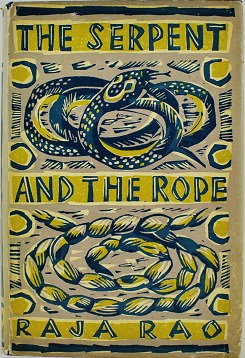
The Serpent and the Rope is Raja Rao's second novel. It was first published in 1960 by John Murray. Written in an autobiographical style, the novel deals with the concepts of existence, reality, and fulfillment of one's capabilities. The protagonist Ramaswamy's thought process in the novel is said to be influenced by vedantic philosophy and Adi Shankara's non-dualism. It also deals with the problems of the immigrants and immigration.
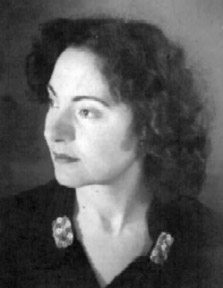
Helle Busacca was an Italian poet, painter, and writer.

Sofie & Cecilia is a historical novel by Canadian author Katherine Ashenburg. The novel drew attention for being Ashenburg's fiction debut published when she was 72. She was inspired to write the book after a visit to Sweden where she learned that despite the fact that they had the same artistic training, Swedish artist Carl Larsson refused to allow his wife Karin to paint after they were married. She initially reached out to her friend, writer Jane Urquhart, hoping she would write about the Larssons, but Urquhart instead encouraged Ashenburg to write a novel about them herself.



















